Phoenix, Arizona is well-known for its sunny weather and beautiful desert landscapes. What many visitors don’t realize is that Phoenix also boasts some incredibly gorgeous city parks.
| Park Name | Features |
|---|---|
| Desert Botanical Garden | Desert plants, walking trails |
| Papago Park | Natural landscapes, Hole-in-the-Rock |
| Japanese Friendship Garden | Traditional Japanese garden |
| Camelback Mountain | Hiking, rock climbing |
| South Mountain Park | Hiking trails, scenic views |
| Margaret T. Hance Park | Urban oasis, cultural events |
| Portland Parkway Park | Green space, community events |
| Encanto Park | Family-friendly, amusement park |
| Steele Indian School Park | Cultural heritage, recreational facilities |
| Pierson Place Park | Community space, outdoor activities |
| Heritage Square | Historic homes, educational tours |
| Papago Orange Grove Park | Citrus orchard, fruit picking |
From sprawling botanical gardens to parks with spectacular mountain views, Phoenix’s public parks offer plenty of opportunities to enjoy the outdoors.
Desert Botanical Garden

Name and Location: Desert Botanical Garden is located at 1201 N. Galvin Parkway in Phoenix.
History and Significance: Founded in 1939, the garden features 50,000+ desert plants across 140 acres, dedicated to conserving and showcasing the biodiversity of the Sonoran Desert through collections, exhibitions and education.
What to Expect: Visitors explore outdoor trails and greenhouses with thousands of labeled cacti and wildflowers. Seasonal events, classes, an outdoor sculpture garden, research library and Plants & People of the Sonoran Desert Trail immerse guests in ecology.
Visitor Information: Open daily 8AM-8PM October–May, 7AM-8PM June-September. Admission $24.95 adults, $12.95 ages 3-17. Memberships available. Near Desert Botanical Garden light rail stop.
The Desert Botanical Garden is one of Phoenix’s most popular attractions, welcoming over 400,000 visitors per year. Spread across 140 acres, this outdoor museum displays over 50,000 desert plants in a unique and ecologically diverse environment. Walking trails wind through huge saguaro cacti, vibrant wildflowers, and a multitude of arid land plants from around the world. Special exhibits change seasonally, allowing return visitors to constantly experience new facets of the desert. The Desert Botanical Garden makes the beauty, variety, and wonder of the desert accessible to everybody.
Papago Park
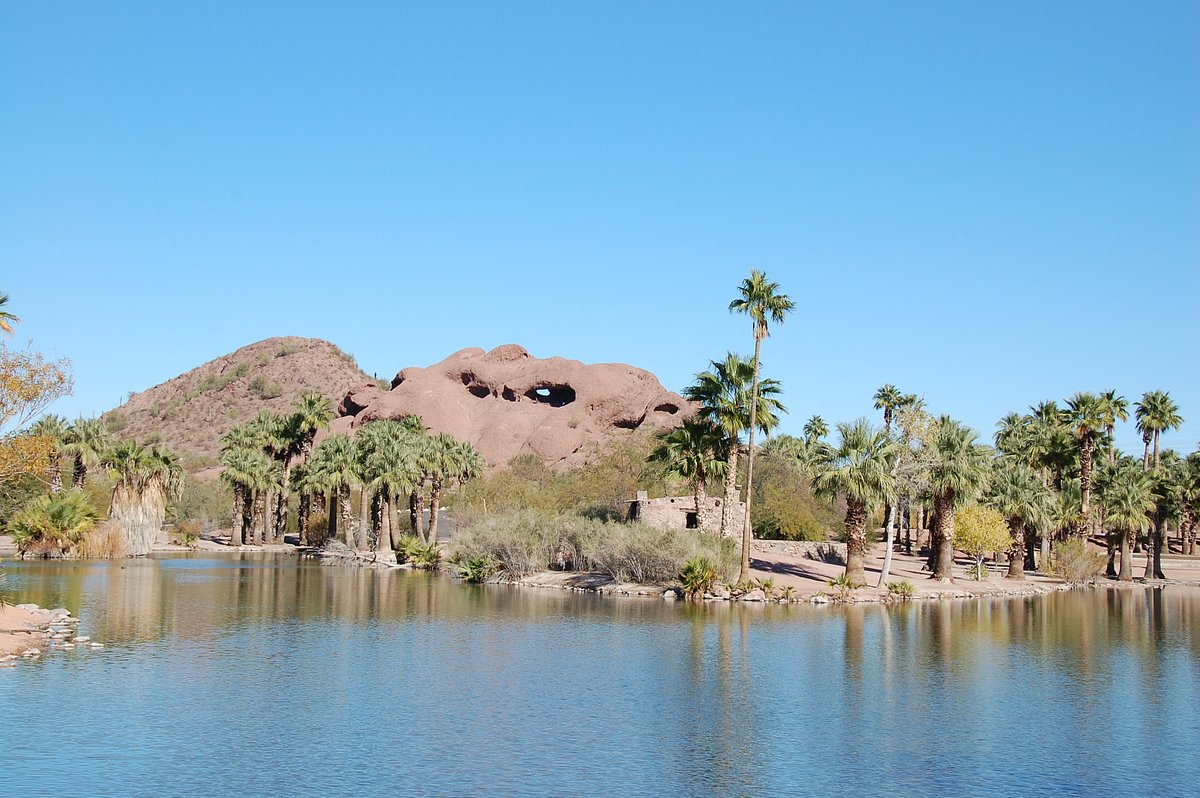
Name and Location: Papago Park is a municipal park spanning 1,200 acres located in East Phoenix at 625 N. Galvin Pkwy.
History and Significance: Known for its signature red sandstone buttes and desert landscapes from Tempe Town Lake to Phoenix Zoo, this park contains nature trails, gardens, picnic spots and access to Hole-In-The-Rock geological landmark amid native flora and fauna.
What to Expect: Outdoor enthusiasts use extensive hiking trails and bike paths while families visit playgrounds, ball fields, Ramada rentals and the narrow Hole-In-The-Rock pass. Seasonal lagoon attractions plus lake access for kayaking and desert tromping.
Visitor Information: Park is open daily 5AM–10:30PM Oct–April, 5AM-8PM May–Sept. Some fees like for hunting permits or camping. Restrooms available.
Papago Park covers 1200 sprawling acres east of Tempe near Scottsdale. Sandstone buttes and mountains create a rugged natural landscape, inhabited by an abundance of desert flora and fauna. The park features lagoons, small zoos and botanical exhibits along the trails. But one of the highlights is Hole-in-the-Rock, a massive natural sandstone formation with an eroded opening travelers have used as a shelter for centuries. Scramble up the formation to take in panoramic views across Phoenix. At night, several granite outcroppings make excellent stargazing locations.
Japanese Friendship Garden
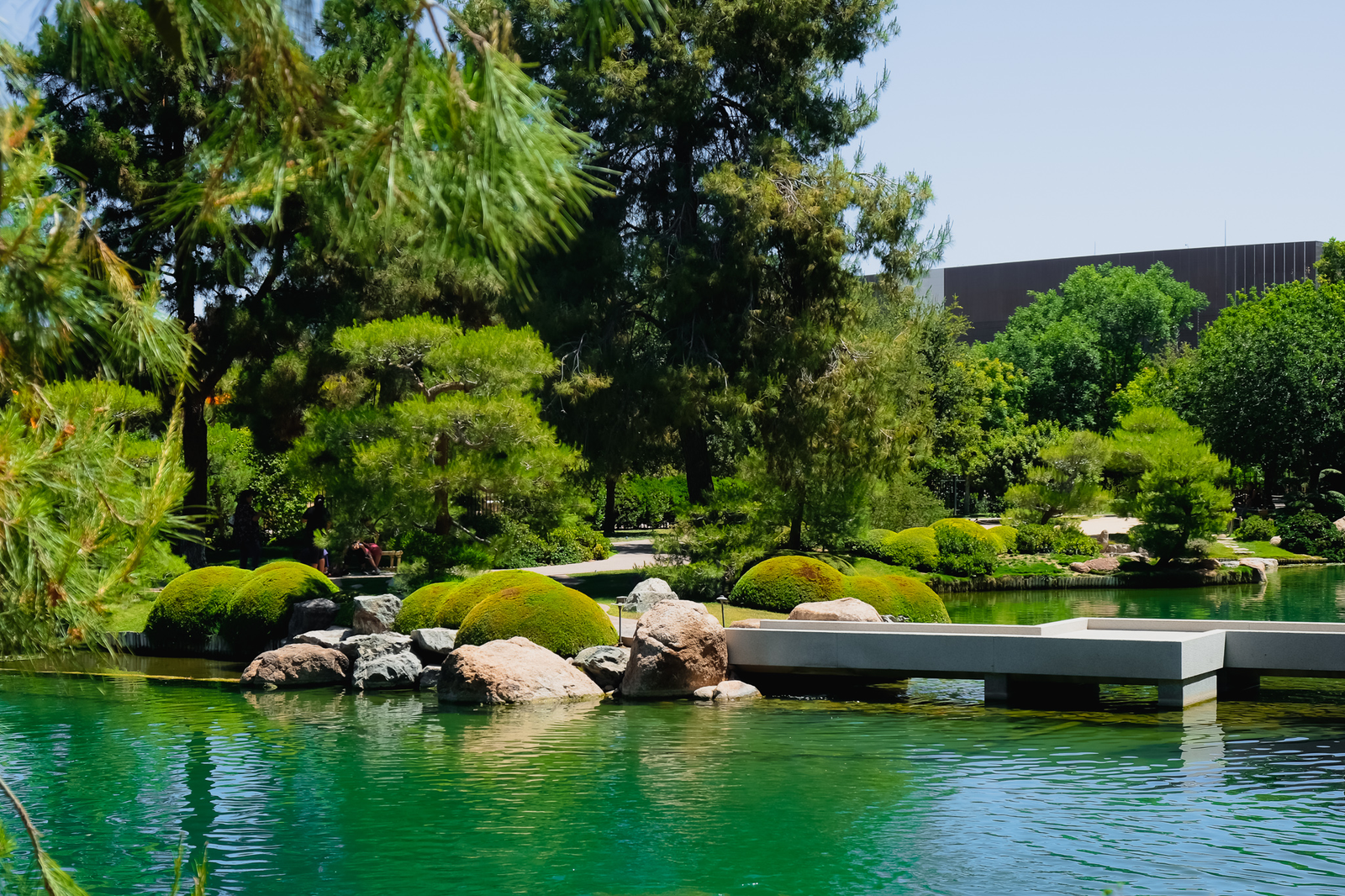
Name and Location: Japanese Friendship Garden is located at 1125 N 3rd Ave in downtown Phoenix’s Margaret T. Hance Park.
History and Significance: Built in 1987 to celebrate twenty-two years of friendship between Arizona sister state Prefecture in Japan, this authentic 3.5 acre garden adjacent to the Irish Cultural Center offers tranquil respite in central Phoenix.
What to Expect: Strolling guests cross arched bridges over a spring-fed koi pond to view flowering cherry trees, a tea garden, and stone art pieces that create a portal into Japanese culture through a mindfully-designed public space containing native plants.
Visitor Information: Open daily 8:30AM–4PM, closed Sundays June–September. Adults $5, children $3. Free on 3rd Tuesday of every month.
Built as a gift from Phoenix’s sister city, Himeji, Japan, the Japanese Friendship Garden transports visitors across the ocean through immaculately constructed gardens. Stroll through the garden’s streams, bridges, and ponds surrounded by lush vegetation, cherry trees, and traditional Japanese structures. Make sure to stop in the tea house for a traditional matcha tea ceremony. Wander through the winding paths to read poetic inscriptions and learn about Japanese culture and lives through the ages. The Japanese Friendship Garden creates tranquility and beauty for all to enjoy.
Camelback Mountain
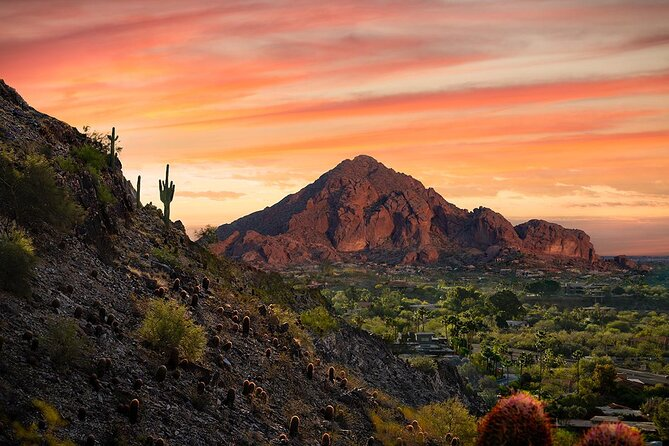
Name and Location: Camelback Mountain sits nested between Phoenix and Paradise Valley as one of the Valley’s most popular hiking spots at 5700 N. Invergordon Rd.
History and Significance: Named for its camel-like twin humps shape, this 2,704 ft mountain with red-rocked desert terrain has attracted hikers since the 1930s who climb 1.2 miles up a challenging switchback trail to take in sweeping views.
What to Expect: Outdoorsy adventurers scramble over steep challenging terrain of loose dirt, gravel, uneven stone paths and railroad ties along sheer drop-offs to eventually reach panoramic views spanning Scottsdale to Downtown Phoenix as reward.
Visitor Information: Park open daily 5AM–7PM. Free access. Arrive early to beat crowds/heat on Camelback trail. Parking fills fast, carpooling recommended. Hike at your own risk.
Named because it resembles a kneeling camel, Camelback Mountain sits right in the heart of Phoenix. It’s extremely popular for hiking and rock climbing thanks to the mountain’s two distinct summits connected by an eroded ridge that resembles a camel’s hump. Hundreds tackle the difficult hike to the top each day along a steep and rocky trail to take in sprawling 360 degree urban views. Get an early start to beat both the crowds and the desert daytime heat. Pack plenty of water too – the hike gains 1200 feet in under a mile! The panoramas from the top make the challenging trek worthwhile.
South Mountain Park
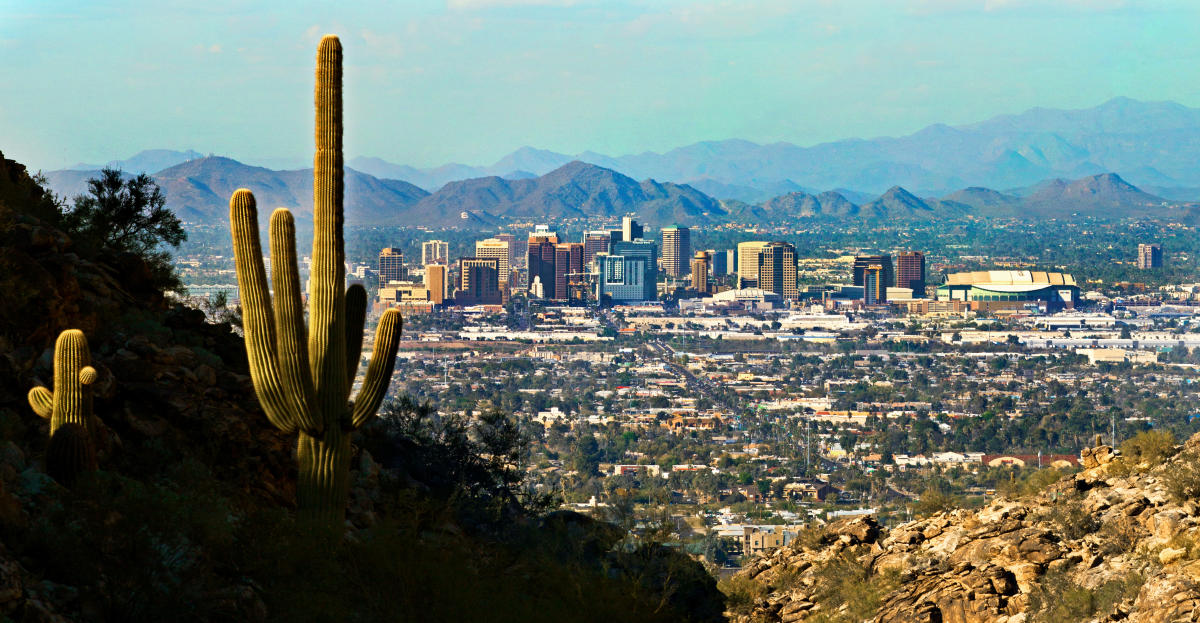
Name and Location: At 16,283 acres, South Mountain Park spans southwest Phoenix with numerous trailheads offering access.
History and Significance: Said to contain the largest municipal park in the US, South Mountain preserves the Sonoran Desert’s natural ecosystem across three mountain ranges containing petroglyphs, a historic Mormon cemetery and over 50 miles of trails.
What to Expect: Outdoor rec lovers hike, bike and horseback ride scenic loop trails of varying difficulties to take in panoramic views of downtown and cityscape sunsets. Rock climbers also navigate bouldering routes.
Visitor Information: Park open 5AM-7PM daily. No entrance fees. Some trailheads accessible year-round while seasonal closures protect habitat. Park maps at phoenix.gov.
At over 16,000 acres, South Mountain Park is one of the country’s largest city parks, boasting over 50 miles of trails across structurally unique and rocky terrain. The park contains several ancient lava dome formations populated with desert flora and fauna plus desert archaeological sites dating back thousands of years. Visit scenic Dobbins Point overlook for astonishing views across downtown Phoenix and the entire valley. The National Trail is another famous South Mountain hike, gaining over 1000 feet to panoramas of the surrounding mountains. Bring a bike too – South Mountain Park contains some of the best mountain biking trails in Arizona.
Margaret T. Hance Park

Name and Location: Margaret T. Hance Park occupies 32 acres of green space in midtown Phoenix centered around 3rd Ave south of Portland Parkway.
History and Significance: Originally constructed atop a freeway cap in 1992, this lush community park underwent a $118 million remake reinvention in 2019 which enhanced connectivity to surrounding cultural centers through walking paths, gardens and public art.
What to Expect: Joggers hit the loop trail circling lawns used for yoga classes and events while families check out three playgrounds, games spaces, Urban Beach splash pad or Japan Friendship Garden before grabbing locally roasted coffee nearby.
Visitor Information: Park hours 5AM–10PM daily. Free access, parking and walking tours. Schedules for farmers markets, concerts and programs at phoenix.gov/parks.
A hidden gem located in downtown Phoenix above Interstate 10, Margaret T. Hance Park consists of 32 acres of deck park over the freeway punctuated by a beautiful brick design. Dog parks, playgrounds, gardens, sitting areas, and walking paths make this a tranquil urban oasis. The park comes alive on weekends with concerts, cultural events, weddings, and even fitness classes. Cool mist sprays from the horizon garden on hot summer days while joggers take advantage of the shade. Climb up the overlook slide mounted on a railway for awesome views of downtown Phoenix or relax under a gazebo pergola. Margaret T. Hance Park proves parks belong in cities too.
Portland Parkway Park
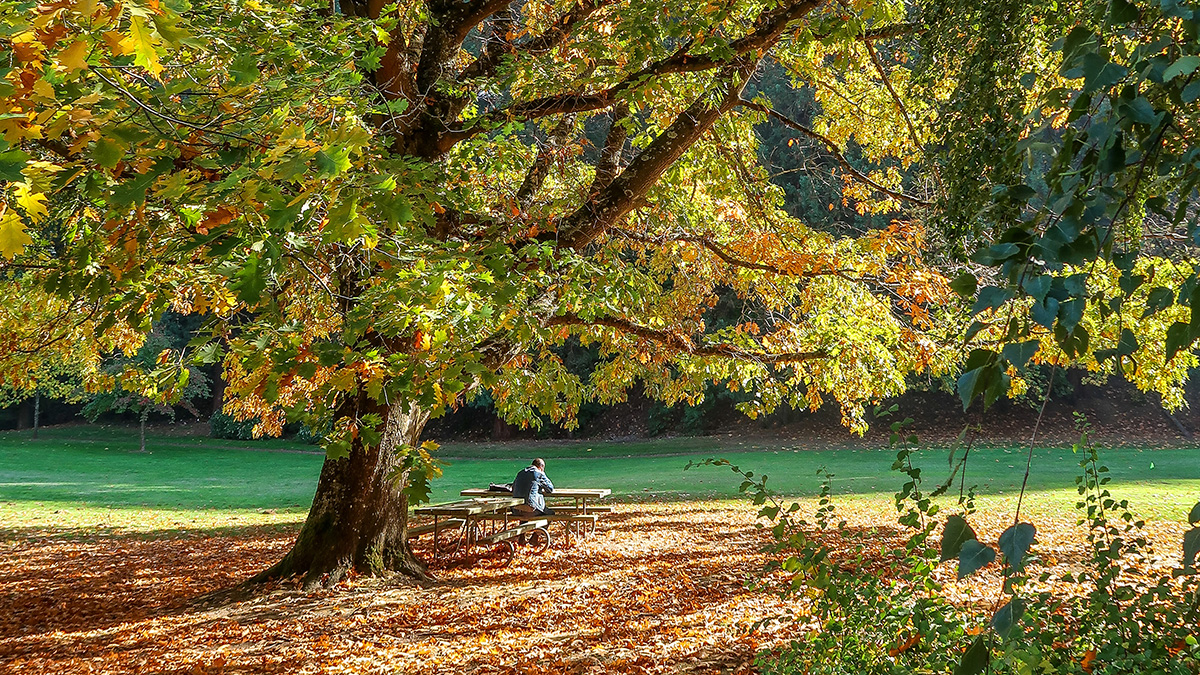
Name and Location: Portland Parkway Park spans just over 5 acres at 815 N. 2nd Ave within Phoenix’s trendy Roosevelt Row arts district.
History and Significance: Converted from abandoned properties in 2005, grassroots groups led a neighborhood revitalization around creating this small urban park now vital to community health offering free wellness amenities amid public art installations.
What to Expect: All are welcome at this live-work creative hub to try outdoor exercise classes, unwind at meditative labyrinth walking stations or utilize shaded work tables while kids play—complementing the vibrant cultural character.
Visitor Information: Park hours 5AM–10PM daily. Some classes like yoga require registration and fees. Parking garages nearby, light rail access.
Tucked away in Central Phoenix’s Alhambra neighborhood lies Portland Parkway Park, an unexpected 8 acre wilderness escape from the surrounding urbanization. Mature shade trees populate the two small hills enclosing a grass amphitheater often used for neighborhood events. Kids love the playground, complete with tunnel slides built underneath mock ruins. Paved walking paths encircle the park, frequented by early morning runners and dog walkers enjoying the serenity. Multiple benches and picnic tables make Portland Parkway a relaxed place for lunch. A small water feature even attracts native birds. Portland Parkway Park demonstrates how lush vegetation can transform even a small urban plot.
Encanto Park
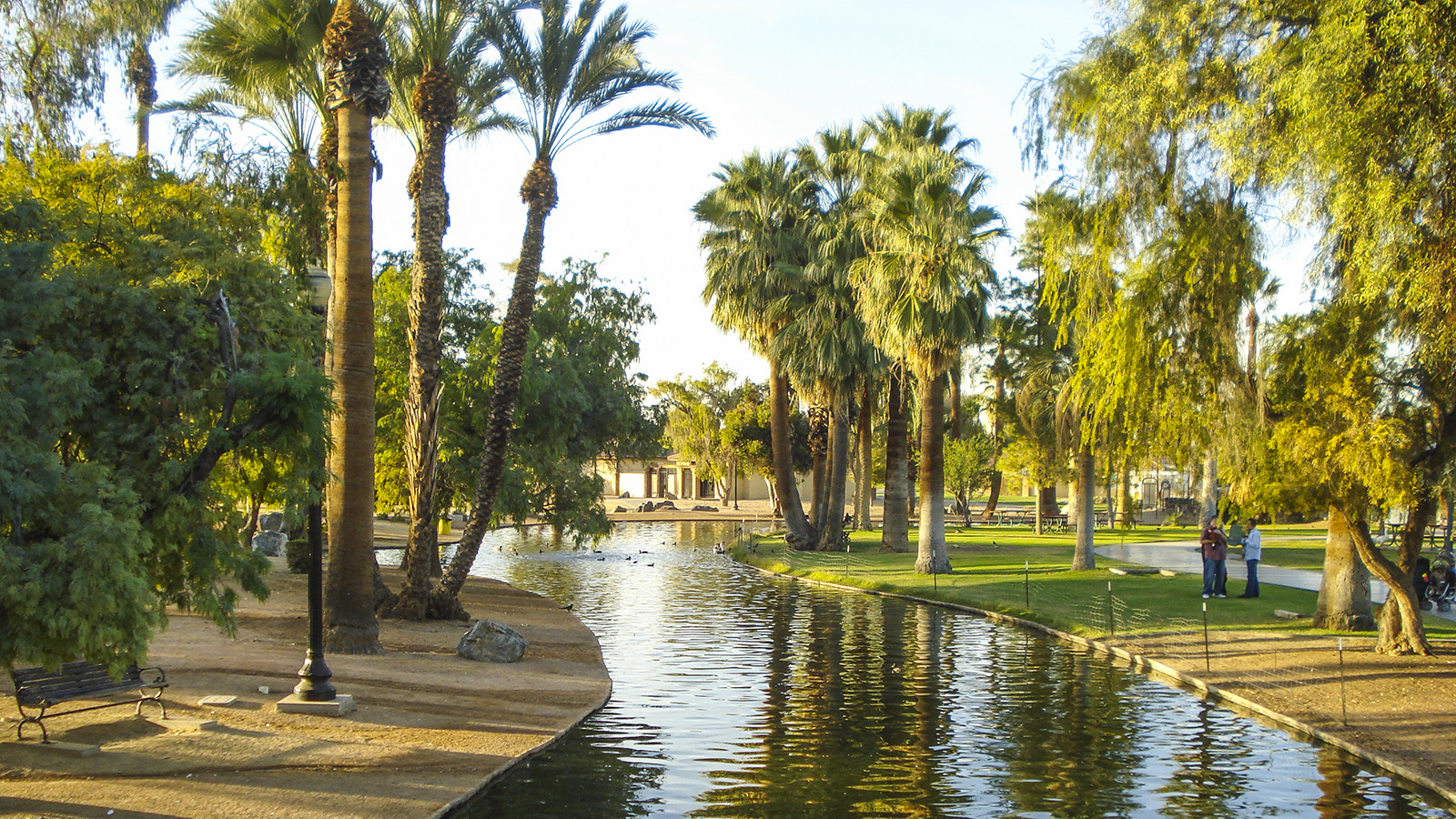
Name and Location: At 48 acres, Encanto Park resides within central Phoenix spanning 15th Ave and Encanto Blvd with its south side touching the Salt River.
History and Significance: Created from swampland in 1949, Encanto has long offered residents a recreational oasis thanks to lush lagoons, nature trails, fishing spots and pedal boats embracing desert landscape enhanced by floral displays within its central pavilion island.
What to Expect: Outdoor enthusiasts traverse walking paths and ornamental bridges while kids try playgrounds, paddle boats or the vintage carousel. Sports facilities, cultural events and summer concerts all mean ongoing activity across Encanto’s grassy fields daily.
Visitor Information: Grounds open 5AM–11PM daily. Some amenities have fees. Parking lots onsite. Visitor center for maps and more phoenix.gov/parks/encanto-park.
Spread out over 200 acres near midtown Phoenix, Encanto Park provides plenty of family-friendly recreational opportunities across its lush landscapes interwoven throughout the Enchanted Island amusement park. Pedal boats ply the fishing lake while runners and walkers enjoy the mile loop trail surrounding it. Three playgrounds provide entertainment for kids of various ages. The park transforms at night with Enchanted Island’s brightly colored carnival rides and games. Concerts rock the amphitheater on summer evenings. Encanto Park even houses a public swimming pool encircled by shimmering mosaic tile murals. With so much to do, Encanto Park makes an ideal spot for gatherings any time of day.
Steele Indian School Park
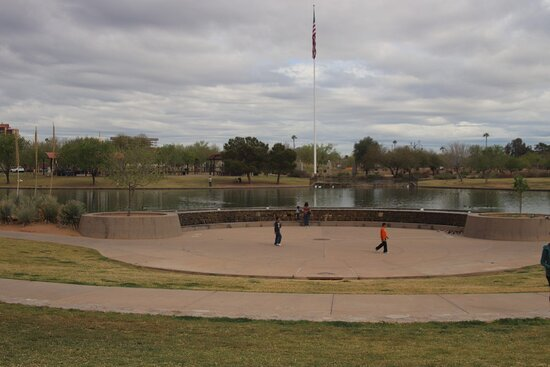
Name and Location: Steele Indian School Park encompasses 46 acres centrally located between 3rd and 7th Streets along Indian School Road in Phoenix.
History and Significance: Once an American Indian boarding school campus, today the park respects tribal history while serving communities through memorials, cultural events, and joyful recreation amenities like playgrounds, sport courts, walking paths and public art celebrating indigenous resilience.
What to Expect: Guests playwall handball, walk dogs, host sports practices or attend markets and festivals while appreciating Native heritage across well-shaded green spaces with mature trees in America’s fifth largest city.
Visitor Information: Free access 5AM–10PM daily. Some parking garage fees may apply for events. Details on schedules at phoenix.gov/parks/steele-indian-school.
What used to be the Phoenix Indian School until 1990 now serves the public as Steele Indian School Park, named after Arizona’s first governor. Shaded walking paths snake through manicured lawns dotted with playgrounds, memorial gardens, ramadas, and public art celebrating Native American culture. The park contains multiple sports fields, including a professional baseball stadium used by the Oakland A’s for spring training baseball, soccer fields utilized by the Mexican National Team, a skate park, horseshoe pits, and tennis courts. Steele Indian School Park hosts some of Arizona’s largest festivals too, like the Phoenix Pride Festival held each April.
Pierson Place Park
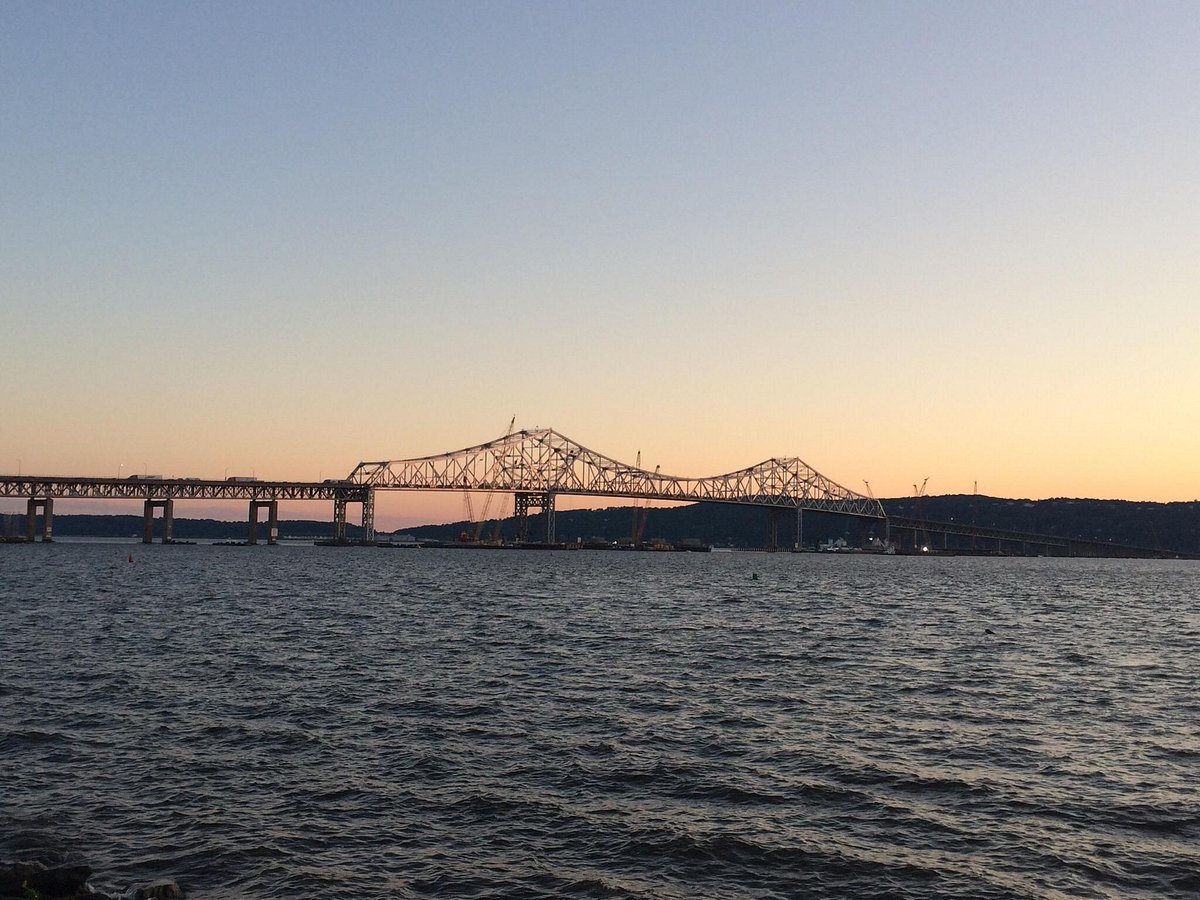
Name and Location: Under a half acre, Pierson Place Park brings interactive public space to 324 W. Coronado Rd in the heart of Phoenix’s historic Coronado Neighborhood.
History and Significance: Established in 2005 when residents rallied to save the 1880s Victorian-style Harrison House from demolition, today the completely renovated park and its ADA playground foster neighborhood connections for all ages day and night.
What to Expect: Passersby admire the preserved home-turned-preschool while kids climb tunnel playground structures, families picnic under ramadas using provided grilling areas or residents read a book perched in garden swing-benches throughout the intimate, contemporary space.
Visitor Information: Free access from 5AM–10PM daily. Four small private parking lots for visitors. Part of Phoenix Parks system, maps online.
Tucked into the historic Pierson Place neighborhood, this small 1 acre park packs an outsized punch when it comes to charm and community. Shady tented spaces filled with ping pong tables and chess boards provide hangout space alongside a playground and clever steelWORD sculpture. Splash pads help families beat the heat in summer. An amphitheater carved into a grass hillside hosts movie nights and concerts. Gardens, heritage trees, and public art installations round out the amenities. On weekends, Pierson Place Park becomes the place to see and be seen, filled with families, young professionals and creatives enjoying a tight-knit Phoenix neighborhood gem.
Heritage Square

Name and Location: Heritage Square occupies nearly 10 acres in downtown Phoenix bounded by 6th and 7th Street from Monroe to Van Buren with an entrance off 6th Street.
History and Significance: Established in 1969, this park preserves actual historic homes rescued from demolition and relocated to create an urban residential phantom neighborhood representing Phoenix architecture from 1895 to 1964 with self-guided access.
What to Expect: Visitors tour a dozen different houses now small museums that bring Phoenix history to life including the Thomas House/Baird Machine Shop, Niles Sorrel House and Bungalow Fire Station while also enjoying event lawn space.
Visitor Information: Park hours 7:30AM-9PM daily, house tours Thursday-Saturday 10AM-4PM, free access. Some street parking available or use garage at Monroe/7th streets.
Located near downtown Phoenix, Heritage Square contains a collection of eight charming Victorian-era homes rescued from demolition and relocated into a city park designed to mimic a historic neighborhood. Self-guided tours allow you to explore the interiors to get a glimpse of life during 19th century Phoenix, decorated with authentic furnishings from the Arizona Historical Society. Costumed docents often populate the homes, explaining artifacts and antique equipment. Heritage Square frequently holds historical reenactments too, like civil war camps or frontier holiday celebrations, complimented by folk music performances. Part living history museum, Heritage Square makes Phoenix’s past come alive.
Papago Orange Grove Park
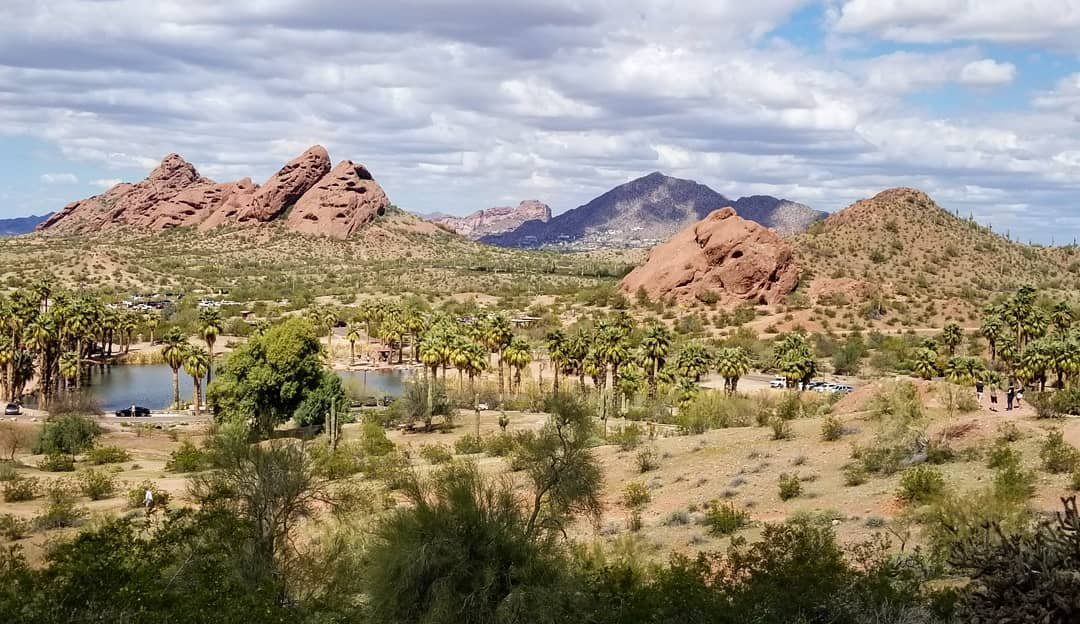
Name and Location: Papago Orange Grove Park occupies 1.8 acres at the intersection of Curry Road and McDowell Road bounded by SCOTTSDALE and Phoenix.
History and Significance: Saved from removal in the 1930s by resident petitions, the small urban orchard park beloved by neighbors contains over 100 orange trees up to 130 years old offering shaded respite and sweet juicy heirloom fruit when in season.
What to Expect: Visitors stroll grove rows, examine beehives facilitating pollination while enjoying patterned shade from mature canopy trees or sitting under gazebos when oranges ripen during winter months ideal for juicing or eating for free.
Visitor Information: Park open daily 6AM–10PM year round. Free access, parking available curbside or use Iglesia Ni Cristo church lot. Bring own bags for fruit collecting.
Tucked into a residential Tempe neighborhood next to a decommissioned water treatment plant lies Papago Orange Grove Park, a surprising 8 acre citrus orchard. Believe it or not, Papago Orange Grove Park provides a straight shot back in time to when Tempe was all orange groves before the suburbia took over. Take the short loop trail through 800 trees dripping with sweet juicy oranges, grapefruits, tangerines, lemons, and more against the backdrop of the Papago Buttes. The City of Tempe encourages picking the fruit too – up to 100 lbs per household per day! Bring along a bag or basket and sample your harvest at the picnic tables and ramadas.
Hance Park
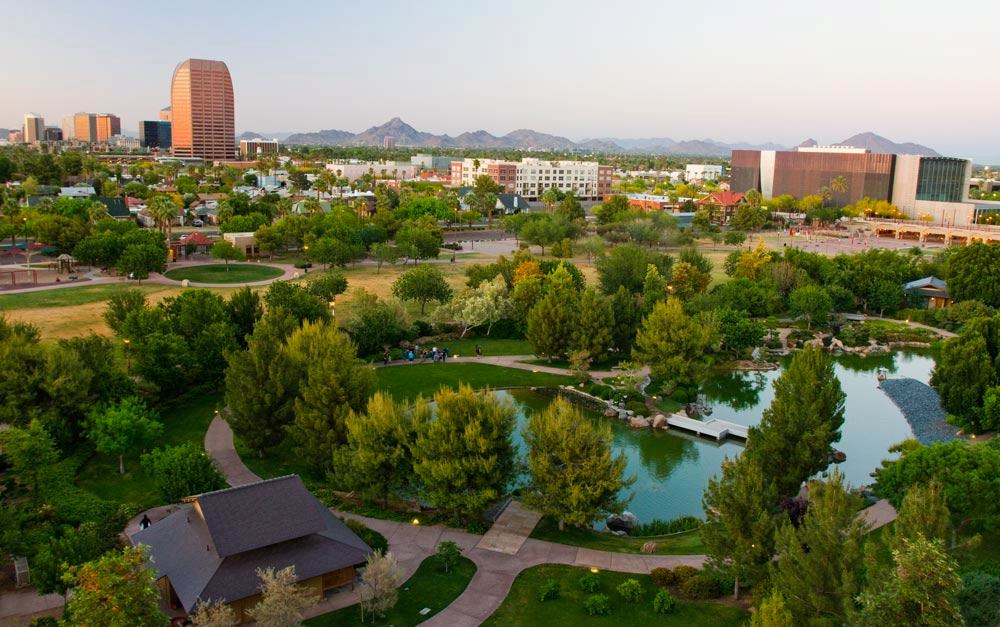
Name and Location: Margaret T. Hance Park occupies 32 acres of green space in midtown Phoenix centered around 3rd Ave south of Portland Parkway, also known as Hance Park.
History and Significance: Originally constructed atop a freeway cap in 1992, this lush community park underwent a $118 million remake reinvention in 2019 enhancing connectivity through walking paths, gardens and public art bridging nearby cultural centers.
What to Expect: Joggers hit the loop trail circling lawns used for yoga classes and events while families check out three playgrounds, game spaces, Urban Beach splash pad and Japan Friendship Garden before grabbing locally roasted coffee nearby.
Visitor Information: Park hours 5AM–10PM daily. Free access, some parking fees. Schedules for farmers markets, concerts and programs at phoenix.gov/parks.
Spanning 32 acres in the heart of downtown Phoenix, Hance Park transforms from an urban oasis by day into the epicenter of city life on nights and weekends. Designed for people watching, the park bustles with activity like concerts, festivals, weekend 5K runs and even swing dance lessons. Public art installations add visual excitement while the overlook slide mounted on an old railroad track thrills kids of all ages. Scenic walking paths under shade structures make Hance Park an ideal lunchtime destination to escape the daily office grind too. With views of the skyline and ample people watching opportunities, Hance Park embodies the open, friendly and fun vibe Phoenix is famous for.
So there you have it – the top 12 parks in Phoenix showcasing everything this desert city has to offer. From native botanical gardens to manicured ballparks…historic homes to modern playgrounds…orange orchards to mountain peaks…Phoenix’s public parks truly offer an outstanding diversity of landscapes, views and attractions for everybody. The city’s visionary commitment to public spaces pays off with world-class parks its citizens love showcasing to visitors. So next time you’re in Phoenix, make sure to spend some time enjoying the natural beauty at these parks!

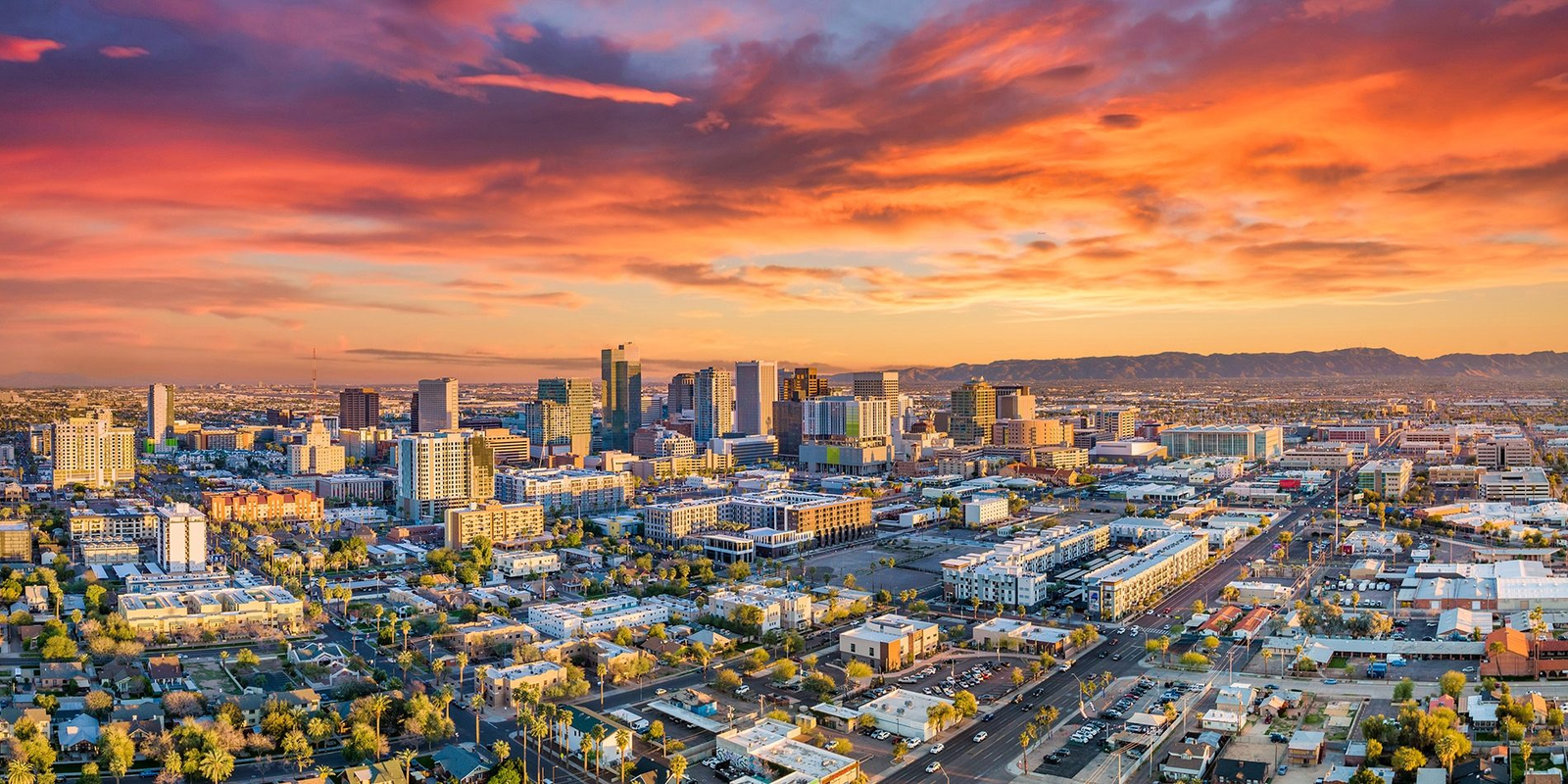


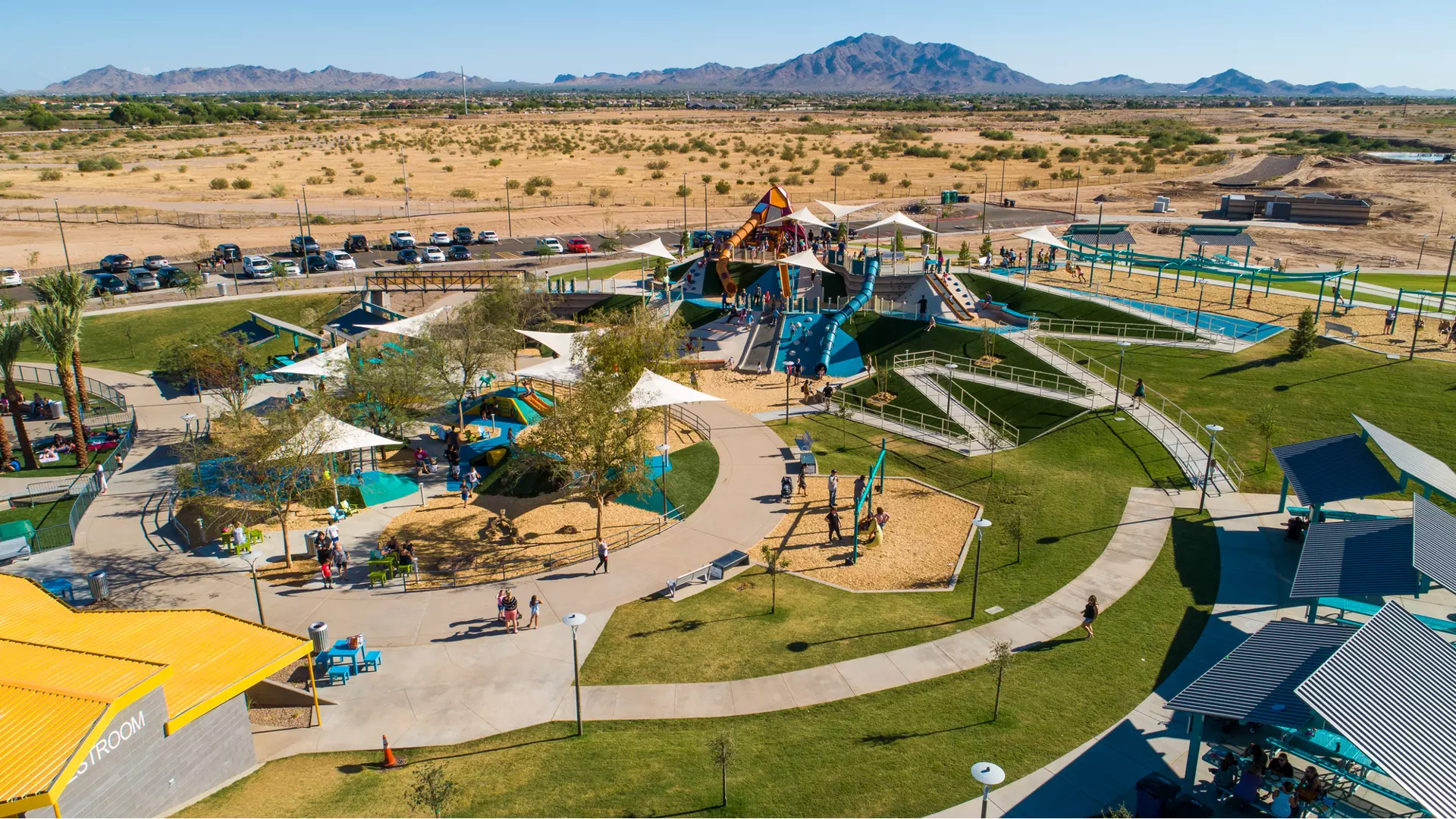
Join the Conversation